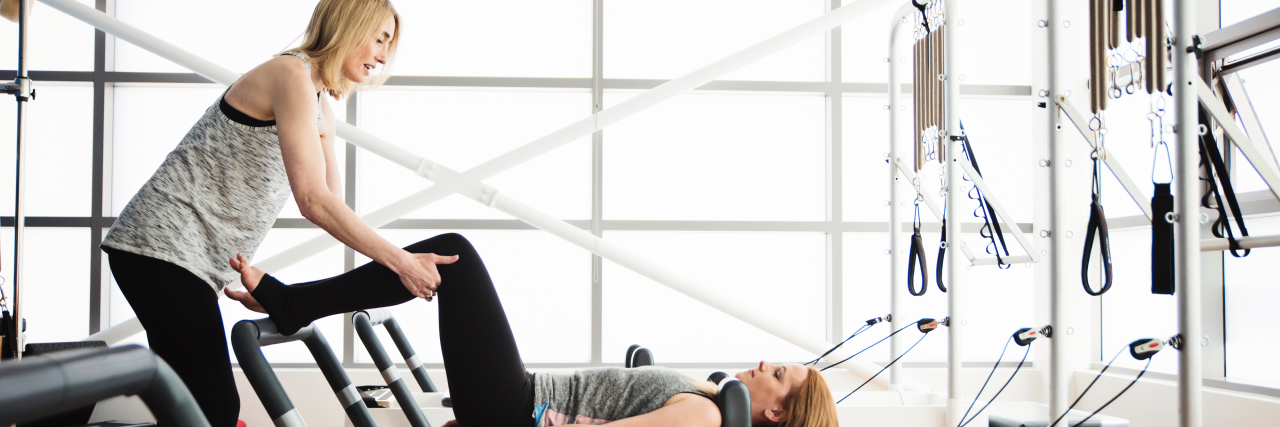How I've Found Stability Through My Hypermobility
We hear a lot about stability as a positive thing – something to aim for in our personal and professional lives. From political straplines to how we describe our health, “stable” is consistently a positive descriptor. But for those who experience hypermobility, and the conditions associated with it, there is a risk of relying on a false sense of stability.
I have experienced this false sense of stability myself, as a result of my own hypermobility. Instinctively, when straightening our joints, most people stretch until we feel the distinctive sensation of the joint locking. However, if you are hypermobile, this locking is felt during hyperextension of the joint, which can be a very dangerous position for the body, blocking connections in the tissue and unnecessarily exposing joints to wear and tear.
I know how easy it can be to fall into the trap of hyperextension, whether through seeking my own stability, or feeling pushed into it by the desire for flexibility sometimes encouraged by overzealous yoga or fitness instructors, for example. Looking back through older photos of myself, my hypermobility stands out to me – now I can’t help but notice every hyperextended knee and elbow; my hypermobile body searching for stability.
For me, this search for a feeling of stability, combined with a misunderstanding of hypermobility, led to chronic pain and chronic injuries in my shoulder and back. As well as the physical pain, I felt a sense of confusion and frustration – I exercised regularly, I thought I looked after myself well, so why was I in pain?
It took hospitalization to realize the extent to which I really needed change. As I now encourage my clients to, I had to find my own solution, my own stability, through a series of movements in the right direction.
Looking back, I now understand that I shouldn’t have been searching for that distinctive feeling of things locking into place. People with hypermobility often struggle with proprioception – we struggle to recognize the true extent of how our bodies move. It took learning about movement and training myself to understand my own movement to help myself to heal and manage my pain.
Now I run my own Pilates studio, and help those struggle with heir own issues with hypermobility and chronic pain. This is something I see time and time again: People push themselves towards that hyperextended position – they react with confusion and frustration when I ask them to restrict their normally wide-ranging movements. But control needs to be built gradually, gently expanding movement to create true stability, rather than the false stability of hyperextended joints.
In many ways, this feeling of needing to push ourselves to the point of pain is symbolic of a larger issue – modern-day lifestyles often encourage us to push ourselves beyond our limits. My chronic pain, along with a range of other chronic health issues, were exacerbated, and to some extent created, by a feeling of needing to push myself beyond my limits. I worked hard. I didn’t stop. I didn’t take time for myself and this put a strain on my body that simply couldn’t be sustained.
Emotionally, a search for false stability can be detrimental for those of us who experience chronic pain – it can lead us to rely on inappropriate or unsustainable ways of managing pain because it feels “stable.” We can often feel pressured into accepting temporary or insufficient solutions, especially if we feel like we are complaining too much or “bothering” others, whether it’s loved ones or medical professionals. This in turn can prevent us from trying to achieve progress or seeking treatments, and finding what is truly the most effective way of managing pain.
My experience with hypermobility and chronic pain taught me that movement is an essential part of processing chronic pain, both physically and psychologically. We need the motivation to keep moving, to keep pushing through, but not to push too far and cause ourselves more damage and more pain.
The solution is learning to celebrate everyday achievements and small steps – movement doesn’t have to be wide-ranging to be valuable. If we continue to appreciate every inch moved in the right direction, we feel motivated to keep going. It was through really understanding movement in this way that I found a way to meaningfully manage my pain, and make tangible changes to my life.
Through movement, both physical and emotional, I found real stability.
We want to hear your story. Become a Mighty contributor here.

